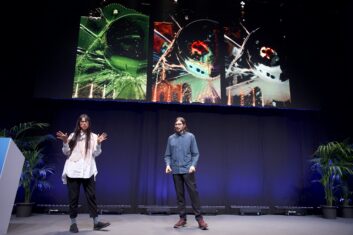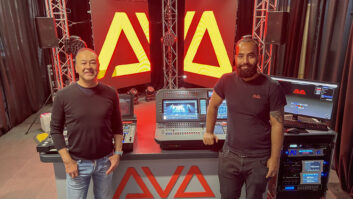
AI technology, teamwork and art collided to give birth to the recent exclusive mapping of Casa Battló, entitled ‘Structures of Being’, by Argentinian artist Sofia Crespo. Speaking on the ISE Show Floor Stage, the Entangled Others studio team founded by Crespo and her technical sidekick Feileacan Kirkbride McCormick discussed the intricacies involved in creating and then projecting organic images onto a surface as complex as the one that fronts Gaudí’s architectural masterpiece.
Crespo, who describes an artistic process that involves the task of training neural network models as meditative, said the complexity of the façade was terrifying. “My previous work was on flat surfaces and I wanted to honour Gaudí’s explorations around the natural world and spirituality.”
Creatively, it was crucial for Crespo to get an idea of what kind of content would end up working, so the team harnessed technology to help her visualise the final result. “It was a big moment for me seeing the projections in action and knowing that the simulations we did were more pessimistic than the end result,” said Crespo.
The team used microscopy, recording the formation of crystals with the collaboration of scientists including Waad AlBawardi, explored the use of simulations with the Barcelona Supercomputing Center to better understand the natural world and artificial life, and used generative systems to create motion and form. A 3D scan of the façade became the canvas for the project and the base input for the neural networks.
“To alleviate the complexities and the unknowns of such a projection with loss of contrast and light, the key part of the workflow was to use Unreal Engine to simulate roughly how the light would work on the facade, tweak the strength of the light, contrast ratio and rough approximation of the materialities,” said Kirkbride McCormick.
To qualify the workflow the team utilised Blackmagic DaVinci Resolve, using NDI to stream the editing process live to the pre-visualisation, which could be oriented and explored from different perspectives. “We wanted to work with the façade, not against it,” concluded Kirkbride McCormick.







